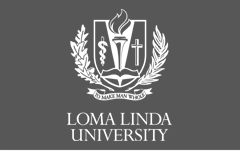Abstract
INTRODUCTION AND OBJECTIVES: Approximately half of all Ph-like B cell acute lymphoblastic leukemia is characterized by overexpression of CRLF2 (CRLF2 B-ALL). CRLF2 B-ALL is associated with high rates of relapse and is more prevalent in Hispanic children with Native American ancestry. CRLF2, together with the IL-7 receptor alpha (IL-7Ra), comprises a receptor complex that is activated by the cytokine, TSLP. Receptor activation by TSLP induces JAK2/STAT5 and PI3/AKT/mTOR signals that promote survival and proliferation of leukemia cells. To study the role of TSLP in CRLF2 B-ALL, we developed a patient-derived xenograft (PDX) model of CRLF2 B-ALL that allows us to vary circulating levels of human TSLP (hTSLP) in a physiologic environment. We generated PDX from patients’ CRLF2 B-ALL cells and compared leukemia burden in mice with varying levels of hTSLP. CRLF2 B-ALL cells grew robustly in PDX models with hTSLP levels at or below levels present in pediatric cancer patients (~10 pg/mL). In contrast, CRLF2 B-ALL cells were essentially eliminated in PDXs with hTSLP at high physiological levels (40-140 pg/mL). These data suggest that high physiologic levels of TSLP exert a potent anti-leukemia effect in Ph-like B-ALL with overexpression CRLF2.
The objective of the proposed research was to evaluate potential mechanisms of TSLP’s anti-leukemia effects.
METHODS: TSLP dose response studies were performed and flow cytometry was used to evaluate the effect of TSLP on CRLF2 signaling, surface expression of TSLP receptor components (IL-7Ra and CRLF2) and expression of the Suppressor of Cytokine Signaling (SOCS) proteins in CRLF2 B-ALL cell lines (MUTZ5 and CALL-4) and CRLF2 B-ALL cells from Hispanic pediatric patients. Whole genome microarray was used to evaluate TSLP effects on SOCS gene expression in patient samples.
RESULTS: CRLF2 B-ALL cell lines cultured with TSLP showed a dose-dependent loss in the ability to induce phosphorylation of STAT5 and S6 (downstream of PI3/AKT/mTOR) following TSLP stimulation. This loss was correlated with a complete loss of surface IL-7Ra, and maintained for 24-48 hours following a pulse of high-dose, but not low-dose, hTSLP. The loss of surface CRLF2 was minimal. The loss of signaling and surface IL-7Ra could be prolonged if high-dose hTSLP levels were maintained. Similarly, preliminary studies of CRLF2 B-ALL cells from pediatric patients showed a loss of CRLF2 signaling and surface IL-7Ra following culture with high-dose TSLP. A potential mechanism for the effects of high-dose TSLP are the suppressor of cytokine signaling (SOCS) genes. These genes encode a family of proteins (SOCS1-7 and CISH) that regulate cytokine signaling via negative feedback through multiple mechanisms including ubiquitin-mediated cytokine receptor degradation.
Whole genome microarray showed that SOCS1, SOCS2, SOCS3 and CISH mRNA are upregulated in patient CRLF2 B-ALL cells cultured with high-dose TSLP. Flow cytometry analysis showed that high-dose TSLP upregulates SOCS1 and SOCS3 proteins in CRLF2 B-ALL cell lines and in patient samples.
CONCLUSIONS: These data provide evidence that TSLP exerts anti-leukemia effects by shutting down CRLF2-mediated signals and that these effects are at least partially mediated by the loss of the IL-7Ra component, and potentially through SOCS family proteins. These studies identify the human TSLP cytokine as a potential biologic therapy to treat CRLF2 B-ALL.
Recommended Citation
Watson, WayAnne
(2019)
"High-dose TSLP Induces Co-receptor Internalization and Signal Shutdown in Ph-like B-ALL with Overexpression of CRLF2,"
Loma Linda University Student Journal: Vol. 3:
Iss.
2, Article 17.
Available at:
https://scholarsrepository.llu.edu/llu-student-journal/vol3/iss2/17

